Smooch



smooch
More Posts from Emilerry and Others
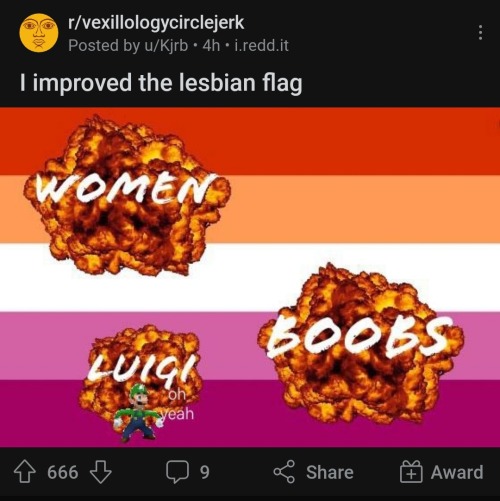

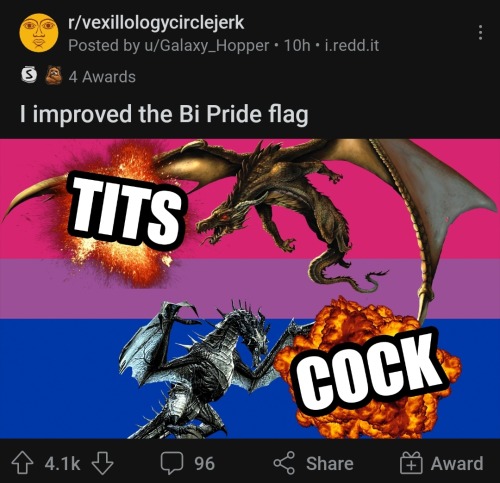
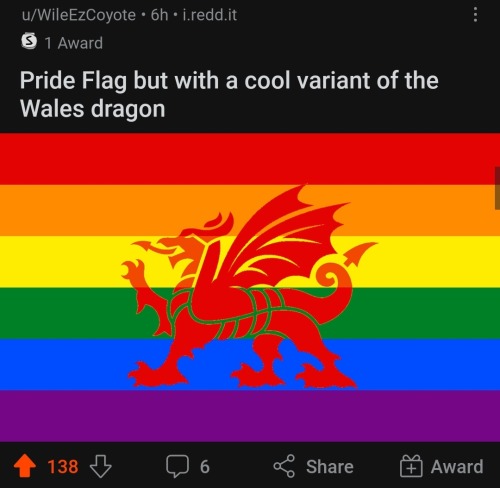

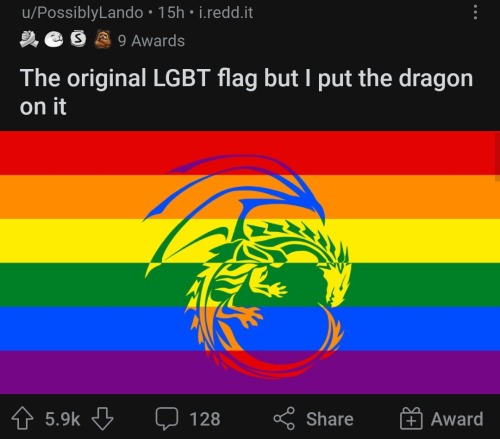

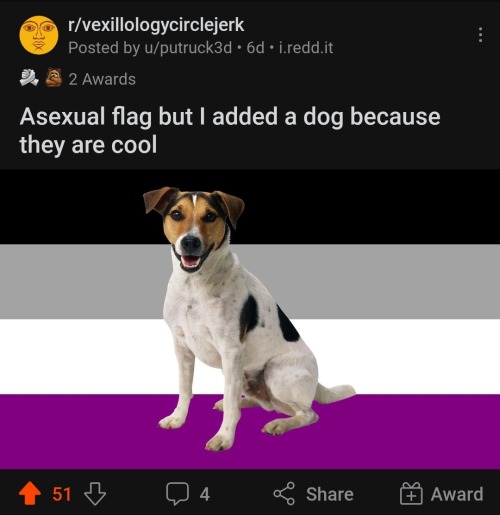
a collection

THE END.
Now for editing, testing and submission to Hosted Games!
tumblr users will see the word shrimp and black out and hit reblog without reading the rest of the post
🦐
something that i really like about blue eye samurai, now that im thinking about it, is that it discusses violence against women without becoming torture porn. like, in a lot of media that portrays women's issues, they show you that scene. like they give you this extended visual of a woman experiencing something traumatic and then laud themselves as feminist for doing so.
blue eye samurai doesn't do that. the whole show is set in a world that is extremely antagonistic toward women, and it makes a point to tell you that being a woman right now sucks, because they are property and are used sexually. but even though it doesn't shy away from this, it doesn't show you the violence itself, which you would almost expect it to because of how graphic the rest of the show is.
im thinking specifically of kinuyo. they very well could have shown us a scene of her being abused, but they didn't. they didn't show the abuse itself, but they did show how it affected her. they showed her seeing a doctor for her sores. they could have made this incredibly traumatic and grotesque scene a spectacle, showing us exactly how powerless she is and how powerful he is. they could have shown us this incredibly triggering event in full detail for our entertainment, but they didn't. they chose not to. and i think that's how it should be.
it is not necessary to have an extended visual and auditory reenactment of violence against women. we the audience understood the gravity of the situation and were able to empathize without needing that scene. having that scene would have completely detracted from the point they are trying to make. it would have turned something completely reprehensible that women everywhere fear because it's a very real issue into entertainment.

New Chapter Released!
Hello again! Hope your summer has gone well 🌻
I know I said the public release would be September 19th, but technically it’s already the 19th in my timezone so I thought, why not drop it at midnight?
With the public release of this new chapter we’re diving into courtly intrigue as the Crown becomes accustomed to their new day-to-day life:
Meeting the Imperial Court, as well as the different factions and political agendas at play
Choices that will influence the Crown’s reputation, and one that may even be locked off depending on previous decisions made. Did you prioritize the public, or forget about them among all the commotion?
Variants of how your chosen love interest will react to your Crown, depending on previous relationship choices your Crown has made. Do you have a low relationship, or a high one?
Two branching routes that each have three different variants depending on what your Crown chose with regards to security and safety. Will you get the best outcome and save lives, or the worst outcome and see casualties? Perhaps somewhere in between?
The love interests are also on the move, some of them quite literally…
A few additional changes made to the game overall:
Note the updated content warnings!
Changed the name mentioned by Mîr Lîlan during A’s Chapter 7 romance scene, if you choose to eavesdrop on them. I won’t mention it here to avoid potential spoilers.
Due to issues on mobile and the itch.io app, renaming your saves manually will no longer be possible if you use the in-game save menu. The game will automatically save with your Crown’s name, the chapter you’re on and the LI route you’re on if applicable.
Existing saves may show “CH0” if you load one up that was made in the middle of a chapter, but once you pass through the start of a new chapter, it should correct itself. In other words, it’s not a bug!
Of course, it’s still possible to rename your saves if you Save To Disk, which is what I always recommend over using the in-game save menu.
Thank you for all your patience and support, I hope you enjoy the new chapter with the nearing end of this summer 💖
For those that are unfamiliar with the game
A Tale of Crowns is a high fantasy romance story, told in the form of a text-based interactive novel with choice mechanics. The setting is inspired by Kurdish culture as well as other historical settings in the Middle East such as Ancient Persia, but it also draws heavily from other cultures and countries in the region.
Your character is native to Arsur, a vast empire overseen by a single ruler known as the Crown. Unlike traditional monarchies, however, the title is not inherited through blood. Whenever the Crown dies, their famed golden eyes pass on to the one chosen by the Spirits of this world to be the new Crown. In this story, your MC takes on that role.
There are four different love interests to choose from, whose genders will be customized to suit the preferences of your Crown. You can find more info about them on the blog page!
Also note that this current version of the game is safe for those 16 years and older.
Like the premise so far? Play it and give it a try! The entire game is free!
If you enjoyed the game, please reblog! Share it with your friends! Recognition and reader interaction is just about the only thing I get in return for creating it ❤️
I think the dsmp should end with all the ccs going on it at the same time and finishing their character arcs in the worst way possible. And they only have an hour to do it. Beeduo divorces, Ranboo is given custody of Michael, who promptly dies because Ranboo forgets about him. Techno gets bored and murders Dream, then escapes and sets off all his withers. Him and Phil lose their canon lives to a wither. Jack Manifold gets lost in the desert and dies of dehydration. Quackity and Wilbur make out while blowing up all of Las Nevadas. Tubbo was wordlessly flipping burgers the entire stream before dying in the explosion. Ponk, and Sam decide to get married. They die in the Las Nevadas explosion during the wedding. Badboyhalo swallows The Egg whole and then is murdered by Puffy, who is murdered by Antfrost, who is murdered by Foolish, who is murdered by Hannah, who is murdered by Skeppy when he crawls out of BBH’s dead body (he was inside the egg again for an unexplained reason). Eret suddenly gets all their memories back and spontaneously combusts. Sapnap goes on a rampage killing as many people and animals as he can before setting Kinoko kingdom and himself on fire. Velvet and TapL show up and immediately lose all their canon lives due to the Las Nevadas explosion, being hunted down and killed by Sapnap, and Techno’s withers. Karl time travels back in time and never returns. Drista shows up and takes Tommy away to go make him a god. With his new god powers, Tommy destroys the entire server with lava, killing anyone who remained. Afterwords he dumps water on it so the entire server is covered in cobblestone and obsidian. Alyssa joins the server holding starbucks, sees how it looks, and then logs off. Slimecicle survives and is doomed to squish around the empty server forever. cc!Dream removes the whitelist and cc!George tweets out the ip. The server floods with fans and they are all talking about dnf. Sneegsnag joins and kills the server for good by immediately finding a rare glitch which duplicates withers infinitely. None of the ccs ever talk about the dsmp again.
Trope Discussion: Blind Characters Covering Their Eyes
The majority of the projects I am asked to beta include blind characters who cover their eyes. Modern characters wear sunglasses. Other characters wear blindfolds for older settings. The story usually justifies the decision in some way, but I always ask: why?
I also neglected to include this in my post on Things I Want to See More of / Less of in Blind Characters. I don’t think I considered it at the time. However, unlike my post on blind seers, I think this trope actually causes some harm in subtle ways and I usually encourage avoiding it. I’ll discuss why in this post.
What’s Wrong With Blind Characters Covering Their Eyes?
Keep in mind that blind characters are not so common. Because they aren’t very common and because not everyone in your audience knows a blind person in real life, the way the character is represented could lead audiences to believe that is how blind people are. This, coupled with a general lack of information given in everyday life, allows writers or artists to unintentionally influence how real life blind people are perceived.
Sure, blind people create blind characters as well. However, we don’t usually get as much exposure or opportunities. We could be held back by other barriers, such as poverty. This means it can be hard to counteract tropes we don’t like or that activity harm us.
Blind characters covering their eyes is potentially harmful for a few reasons.
One reason is that it is assumed that all blind people always cover their eyes. This means that in real life, blind people are not as easily recognized even when they have a cane. The white cane is supposed to be what alerts others that a person is blind. Instead, people get confused about why a blind person isn’t wearing sunglasses if they’re blind. This leads to unnecessary explanations, lost time, refusal to help, and sometimes hostility. Wearing sunglasses helps some blind people communicate blindness more easily. They may feel forced to adopt the stereotype.
Another reason is that it unknowingly touches on the pressure some blind people face to cover their eyes. This could be because they are self-conscious about them or because of pressure to make other people feel more comfortable. This pressure could originate from the way their eyes look or move, or even due to lack of eye contact. Sometimes, stories present these ideas as normal for blind people, which increases the idea that blind people should be ashamed of their eyes or that they should prioritize the comfort of others for something superficial.
Where Did the Stereotype Come From?
While I am not sure about the exact origins, the stereotype probably comes from a few sources: shorthand symbolism and abled actors playing blind characters.
-Shorthand symbolism could be used in art or plays to indicate a character’s blindness.
-Because films and shows are so popular and more easily consumed, audiences are more often exposed to blind people on the screen. Actors who aren’t blind often wear sunglasses to make them appear blind to audiences who would perceive eye movements as breaking character. The actors in live-action material often wear sunglasses to hide their eyes. Why blind actors aren’t hired initially is another story.
This page discusses the sunglasses trope in films.
-Some blind people who wear sunglasses for any reason may also simply be more recognizable as a blind person as opposed to blind people who don’t wear sunglasses. This means others may not be aware that blind who don’t wear dark sunglasses exist.
The Sunglasses Stereotype
I should mention here that blind people are simultaneously expected to wear sunglasses as a signifier of blindness while also accused of faking for wearing them. The rationale is the idea that blind people can’t see the sun and therefore would never need sunglasses. This, of course, depends on the stereotypes that all blind people are totally blind, which is not true. Most sources I have found over my time writing this blog state that less than 10 to 15% of blind people are totally blind, which means about 85 to 90% of blind people have light perception or some residual vision.
When Should Our Characters Wear Sunglasses or a Blindfold?
Many writers have characters cover their eyes because it feels right. Some assume the character would feel uncomfortable with the way their eyes look and that they prefer to hide them. In order to write this trope well, you must understand your reason behind it.
Let’s examine why blind people wear sunglasses in real life. This page is a good one to read and was very helpful in constructing this post.
Light sensitivity, or photophobia, occurs when people have sensitivity to light, usually sunlight. Blind people can also expirience this.
Sunglasses are used to shield their eyes from the sun when outdoors and from big windows when indoors. Some sources state synthetic lighting is not usually an issue and others state some people may want to wear their sunglasses indoors.
For characters who aren’t modern, the equivalent of sunglasses would probably be a blindfold or eye patch.
Blind people like fashion just as the next person. They might enjoy wearing sunglasses occasionally. However, they don’t wear them all the time.
Blind people might also want to protect their eyes from dust or injury, whether they can see or not. This can be accomplished with sunglasses or regular glasses.
How Do We Write Blind Characters Covering Their Eyes Respectfully?
This is one of those tropes I prefer people avoid. I say “avoid” because I want to come across it less which means way less people need to use it.
Think about why you want your blind character to cover their eyes.
Is it because it simply feels right to you? Is it because you believe it will help audiences understand or accept that your character is blind? Is it because you can’t imagine your character any other way? Is it because your feel deep down that your character’s eyes would make other characters uncomfortable?
Think about where this idea comes from and whether you really want to use it.
If you have decided it makes sense for your character to cover their eyes, here are some tips for you to do it well.
1. If they use sunglasses for fashion, have the blind character go without the accessory periodically throughout the story. Consider avoiding them covering their eyes when they are first introduced, as first impressions can be memorable. Your blind character should not be the only one who happens to wear sunglasses as part of their style.
2. If they are sensitive to light, do research on photophobia. Consider where the character is when covering their eyes. Do they mostly wear sunglasses outside and near big windows? Do screens bother them? Make it clear in the story.
3. I always suggest having more than one blind character in a story. This is important for moments such as this. Having a blind character who doesn’t cover their eyes shows that not all blind people cover their eyes. This, in addition to a writer understanding exactly why their character covers their eyes, will help immensely.
This trope is a problem when no reference to the alternative is made, usually because the writer doesn’t understand what they’re writing about. They haven’t considered the reasons blind people cover their eyes and therefore aren’t aware that not all blind people do so. Having more than one blind character in the story shows more than one experience, including covering or not covering eyes. Showing different experiences eliminates the idea that blind people “just do” certain things. It makes people think.
If you want audiences to think, you first need to ask: why?
When writing marginalized characters, remember that their marginalization decreases the amount of accurate information available about them. Audiences don’t have as many resources to check. They may even lack the inclination to do so at all. This could be because of a desire to maintain biases or simply because they don’t consider blind people much outside of entertainment or pity. Surprisingly, some people are even actively resistant or hostile to the idea of taking time to learn about the experiences of blind people.
This means your story could be more impactful than you realize.
When you’re writing, ask yourself the question: why? You might realize that it makes for a richer, more informed story.
-
 enby-berries liked this · 1 week ago
enby-berries liked this · 1 week ago -
 academicfailuregirl liked this · 1 week ago
academicfailuregirl liked this · 1 week ago -
 mr-ultrakill liked this · 1 week ago
mr-ultrakill liked this · 1 week ago -
 mintychii liked this · 1 week ago
mintychii liked this · 1 week ago -
 sharyusu reblogged this · 1 week ago
sharyusu reblogged this · 1 week ago -
 nikos-side-mainblog-mesu reblogged this · 1 week ago
nikos-side-mainblog-mesu reblogged this · 1 week ago -
 zereshq liked this · 1 week ago
zereshq liked this · 1 week ago -
 demeletron liked this · 2 weeks ago
demeletron liked this · 2 weeks ago -
 transparentinternetchild liked this · 2 weeks ago
transparentinternetchild liked this · 2 weeks ago -
 ultra-unknown liked this · 2 weeks ago
ultra-unknown liked this · 2 weeks ago -
 wezzsaa liked this · 2 weeks ago
wezzsaa liked this · 2 weeks ago -
 mtsnow reblogged this · 2 weeks ago
mtsnow reblogged this · 2 weeks ago -
 beatsofdeath liked this · 2 weeks ago
beatsofdeath liked this · 2 weeks ago -
 samtamdan reblogged this · 2 weeks ago
samtamdan reblogged this · 2 weeks ago -
 samtamdan liked this · 2 weeks ago
samtamdan liked this · 2 weeks ago -
 alhax liked this · 2 weeks ago
alhax liked this · 2 weeks ago -
 rune-emberwatcher liked this · 2 weeks ago
rune-emberwatcher liked this · 2 weeks ago -
 pusakalye liked this · 2 weeks ago
pusakalye liked this · 2 weeks ago -
 ghostgoulx3 liked this · 2 weeks ago
ghostgoulx3 liked this · 2 weeks ago -
 shkdd7 liked this · 3 weeks ago
shkdd7 liked this · 3 weeks ago -
 ditzy-lemon liked this · 3 weeks ago
ditzy-lemon liked this · 3 weeks ago -
 autumn-enigma liked this · 3 weeks ago
autumn-enigma liked this · 3 weeks ago -
 diwolf reblogged this · 3 weeks ago
diwolf reblogged this · 3 weeks ago -
 theeverschmever liked this · 3 weeks ago
theeverschmever liked this · 3 weeks ago -
 irin-l0ophol3 liked this · 4 weeks ago
irin-l0ophol3 liked this · 4 weeks ago -
 strawb3rri-bliss liked this · 4 weeks ago
strawb3rri-bliss liked this · 4 weeks ago -
 phurrina liked this · 1 month ago
phurrina liked this · 1 month ago -
 carcinogeneticst reblogged this · 1 month ago
carcinogeneticst reblogged this · 1 month ago -
 carcinogeneticst liked this · 1 month ago
carcinogeneticst liked this · 1 month ago -
 proceeds-to-die-inside liked this · 1 month ago
proceeds-to-die-inside liked this · 1 month ago -
 nikos-side-mainblog-mesu reblogged this · 1 month ago
nikos-side-mainblog-mesu reblogged this · 1 month ago -
 nikos-side-mainblog-mesu liked this · 1 month ago
nikos-side-mainblog-mesu liked this · 1 month ago -
 thedemonstoldme reblogged this · 1 month ago
thedemonstoldme reblogged this · 1 month ago -
 thedemonstoldme liked this · 1 month ago
thedemonstoldme liked this · 1 month ago -
 anxiously-awaiting liked this · 1 month ago
anxiously-awaiting liked this · 1 month ago -
 anti-enashinonome reblogged this · 1 month ago
anti-enashinonome reblogged this · 1 month ago -
 kimmy--wimmy liked this · 1 month ago
kimmy--wimmy liked this · 1 month ago -
 artenjoyeer liked this · 1 month ago
artenjoyeer liked this · 1 month ago -
 lazarustique liked this · 1 month ago
lazarustique liked this · 1 month ago -
 musichawkposts reblogged this · 1 month ago
musichawkposts reblogged this · 1 month ago -
 musichawkposts liked this · 1 month ago
musichawkposts liked this · 1 month ago -
 graylikethecolor42 liked this · 1 month ago
graylikethecolor42 liked this · 1 month ago -
 douggydraws liked this · 1 month ago
douggydraws liked this · 1 month ago -
 master56744-blog liked this · 1 month ago
master56744-blog liked this · 1 month ago -
 tumbleweed04 liked this · 1 month ago
tumbleweed04 liked this · 1 month ago -
 laillaa liked this · 1 month ago
laillaa liked this · 1 month ago -
 mangovoices reblogged this · 1 month ago
mangovoices reblogged this · 1 month ago





